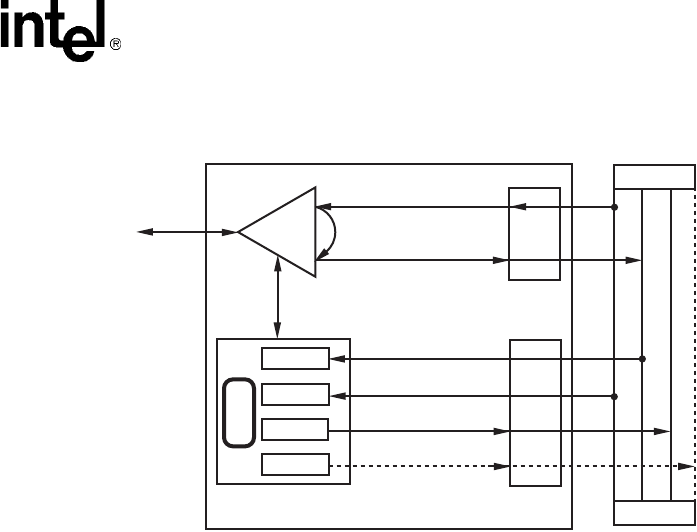User's Manual
Table Of Contents
- Contents
- Figures
- Tables
- Revision History
- About This Publication
- 1. Product Description
- 2. Programming Models
- 3. Device Handling
- 4. Event Handling
- 5. Error Handling
- 6. Application Development Guidelines
- 7. Call Progress Analysis
- 7.1 Call Progress Analysis Overview
- 7.2 Call Progress and Call Analysis Terminology
- 7.3 Call Progress Analysis Components
- 7.4 Using Call Progress Analysis on DM3 Boards
- 7.5 Call Progress Analysis Tone Detection on DM3 Boards
- 7.6 Media Tone Detection on DM3 Boards
- 7.7 Default Call Progress Analysis Tone Definitions on DM3 Boards
- 7.8 Modifying Default Call Progress Analysis Tone Definitions on DM3 Boards
- 7.9 Call Progress Analysis Errors
- 7.10 Using Call Progress Analysis on Springware Boards
- 7.11 Call Progress Analysis Tone Detection on Springware Boards
- 7.12 Media Tone Detection on Springware Boards
- 7.13 Default Call Progress Analysis Tone Definitions on Springware Boards
- 7.14 Modifying Default Call Progress Analysis Tone Definitions on Springware Boards
- 7.15 SIT Frequency Detection (Springware Only)
- 7.15.1 Tri-Tone SIT Sequences
- 7.15.2 Setting Tri-Tone SIT Frequency Detection Parameters
- 7.15.3 Obtaining Tri-Tone SIT Frequency Information
- 7.15.4 Global Tone Detection Tone Memory Usage
- 7.15.5 Frequency Detection Errors
- 7.15.6 Setting Single Tone Frequency Detection Parameters
- 7.15.7 Obtaining Single Tone Frequency Information
- 7.16 Cadence Detection in Basic Call Progress Analysis (Springware Only)
- 8. Recording and Playback
- 8.1 Overview of Recording and Playback
- 8.2 Digital Recording and Playback
- 8.3 Play and Record Functions
- 8.4 Play and Record Convenience Functions
- 8.5 Voice Encoding Methods
- 8.6 G.726 Voice Coder
- 8.7 Transaction Record
- 8.8 Silence Compressed Record
- 8.9 Recording with the Voice Activity Detector
- 8.10 Streaming to Board
- 8.11 Pause and Resume Play
- 8.12 Echo Cancellation Resource
- 9. Speed and Volume Control
- 10. Send and Receive FSK Data
- 11. Caller ID
- 12. Cached Prompt Management
- 13. Global Tone Detection and Generation, and Cadenced Tone Generation
- 13.1 Global Tone Detection (GTD)
- 13.1.1 Overview of Global Tone Detection
- 13.1.2 Global Tone Detection on DM3 Boards versus Springware Boards
- 13.1.3 Defining Global Tone Detection Tones
- 13.1.4 Building Tone Templates
- 13.1.5 Working with Tone Templates
- 13.1.6 Retrieving Tone Events
- 13.1.7 Setting GTD Tones as Termination Conditions
- 13.1.8 Maximum Amount of Memory for Tone Templates
- 13.1.9 Estimating Memory
- 13.1.10 Guidelines for Creating User-Defined Tones
- 13.1.11 Global Tone Detection Application
- 13.2 Global Tone Generation (GTG)
- 13.3 Cadenced Tone Generation
- 13.3.1 Using Cadenced Tone Generation
- 13.3.2 How To Generate a Custom Cadenced Tone
- 13.3.3 How To Generate a Non-Cadenced Tone
- 13.3.4 TN_GENCAD Data Structure - Cadenced Tone Generation
- 13.3.5 How To Generate a Standard PBX Call Progress Signal
- 13.3.6 Predefined Set of Standard PBX Call Progress Signals
- 13.3.7 Important Considerations for Using Predefined Call Progress Signals
- 13.1 Global Tone Detection (GTD)
- 14. Global Dial Pulse Detection
- 14.1 Key Features
- 14.2 Global DPD Parameters
- 14.3 Enabling Global DPD
- 14.4 Global DPD Programming Considerations
- 14.5 Retrieving Digits from the Digit Buffer
- 14.6 Retrieving Digits as Events
- 14.7 Dial Pulse Detection Digit Type Reporting
- 14.8 Defines for Digit Type Reporting
- 14.9 Global DPD Programming Procedure
- 14.10 Global DPD Example Code
- 15. R2/MF Signaling
- 16. Syntellect License Automated Attendant
- 17. Building Applications
- Glossary
- Index

Voice API Programming Guide — June 2005 103
Recording and Playback
Figure 16. Echo Canceller Operating over a TDM bus
Once the ECR feature is enabled on a board, each voice channel is also permanently assigned two
TDM bus transmit time slots. These time slots are referred to as the voice-transmit time slot and
the echo-cancellation transmit time slot. You can retrieve the time slot numbers for each via the
dx_getxmitslot( ) and dx_getxmitslotecr( ) functions, respectively. If the ECR feature is not
enabled, the channels are not assigned the echo cancellation TDM bus transmit time slots, and ECR
mode is not possible on any voice channel of that board.
The function dx_listen( ) routes the echo-carrying signal to the voice device. A call to
dx_listenecr( ) or dx_listenecrex( ) routes the echo reference signal to the voice channel and
simultaneously activates ECR mode. The resulting echo canceller uses the echo reference signal to
estimate the echo component in the echo-carrying signal, and subtracts that estimate from the echo-
carrying signal. This process results in an echo-canceled signal with a greatly reduced echo
component.
For another device to receive the echo-canceled signal output by the echo canceller, it calls
dx_getxmitslotecr( ) to retrieve the echo canceller’s transmit time-slot number, and calls
xx_listen( ) (where xx_ is ag_, dt_, dx_, or ms_) to connect its receive channel to the echo-
canceled signal.
To return the voice channel to standard voice processing (SVP) mode, the application calls
dx_unlistenecr( ) on the voice channel to stop the echo canceller, disable ECR mode, and
disconnect the echo canceller’s receive channel.
For technical information on ECR functions, see the Voice API Library Reference.
For examples of echo cancellation configurations, see Section 8.12.4, “Echo Cancellation Resource
Application Models”, on page 105.
SCbus
Echo
Voice
Device
SCbus
Echo-Generating
Signal
Echo-Carrying
Signal
Echo-Carrying Signal
Echo-Reference Signal
Enabled in ECR Mode
Disabled in ECR Mode
Telephone
Network
Switching Handler
TX
RX
Analog
Device
Signaling
VOX_TX
VOX_RX
ECR_RX
ECR_TX
E
C
R










